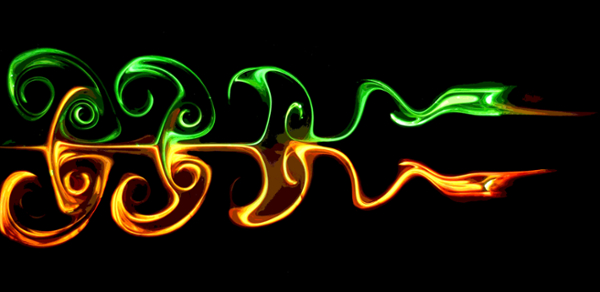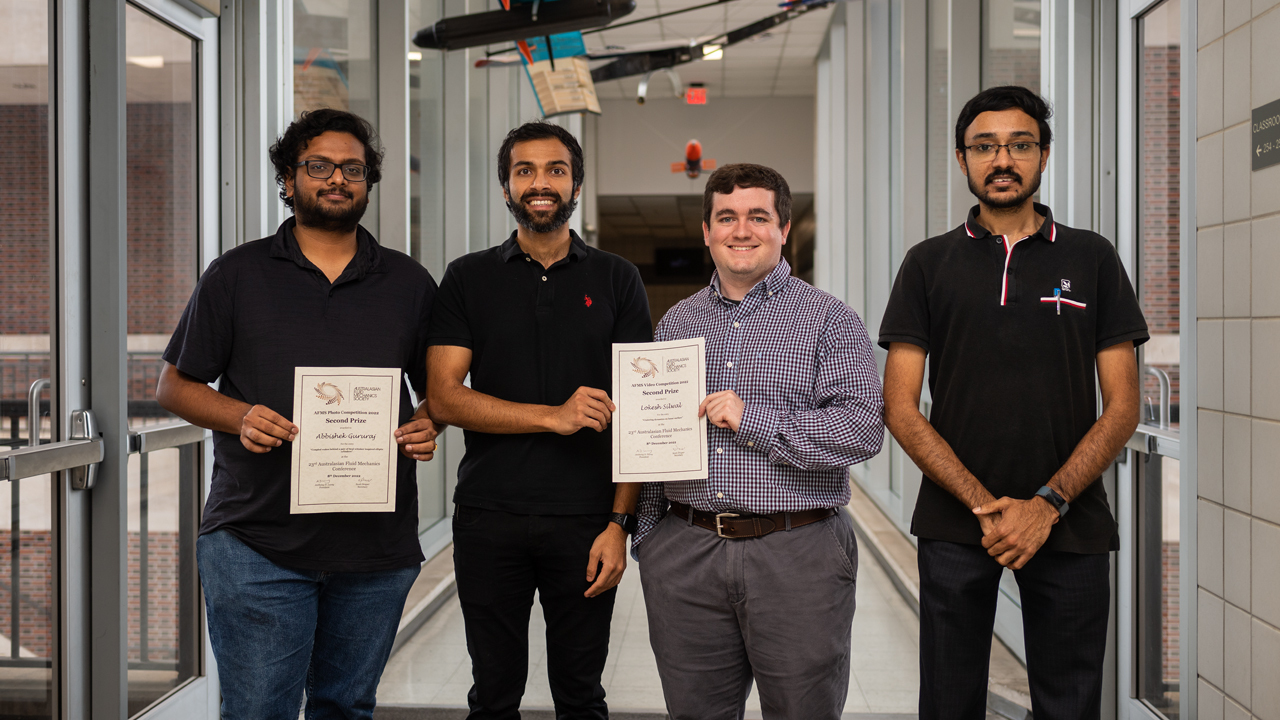Aerospace researchers awarded for visual analysis at international conference
Published: Jan 18, 2023 7:22 AM
By Joe McAdory
Four researchers in aerospace engineering, graduate students Lokesh Silwal, Daniel Stubbs, and Abbishek Gururaj, and postdoctoral fellow Vikas Bhargav coupled their scientific findings with creative visual skills to earn awards at the Australasian Fluid Mechanics Society conference Dec. 4-7 in Sydney, Australia.
Their work demonstrated fluid mechanics, the analysis of fluid flow, via photos and videos.
“Communicating complex and high impact findings from a research project is very challenging,” said Vrishank Raghav, assistant professor in aerospace engineering. "Such video and/or photo competitions provide one an avenue to hone these skills. In addition, it allows the students and researchers to take a step back and think about the big picture and develop creative and artistic ways to communicate their scientific findings to the public."
Silwal, a member and past president of Auburn University’s Vertical Flight Society who finished third in last October’s Graduate Engineering Research Showcase, teamed with Bhargav and Stubbs to win second place in the AFMS’ video competition. Their entry, “Cratering dynamics on the lunar surface,” shows that plumes generated by landing craft on the moon could interact with craters on the moon’s surface – potentially destabilizing the craft.
“To characterize these effects, we start by visually exploring the differences in cratering dynamics at the atmospheric and near-vacuum ambient conditions,” the video entry explained. “These features are vastly different, and the governing physics stands to be discerned.”
Why is this important? Lunar landings will be a key element to future Artemis missions to the moon and beyond. Artemis I, which launched on Nov. 16 and returned Dec. 11, is tentatively scheduled to land on the lunar surface in 2025.
This award-winning video entry stemmed from an ongoing NASA-funded multi-team effort in the Department of Aerospace Engineering between research groups led by professors David Scarborough, Raghav, Brian Thurow, and Masatoshi Hirabayashi, which studies plume-surface interactions and lunar dust formation during descent and touchdown on the moon in relation to rocket exhaust.

Gururaj, the Auburn Vertical Flight Society vice-president, won second place in the event’s photo competition with his entry, “Coupled wakes behind a pair of seal-whisker inspired elliptic cylinders.”
“Seals have two or more whiskers emanating from the same follicle, helping them to maneuver and hunt prey efficiently,” his entry reads. “Inspired by seal whiskers, the wake behind a pair of elliptic cylinders is studied using dye flow visualization. Fluorescein and rhodamine dye is applied to the individual ellipses, and the flowfield is visualized using a planar laser sheet. The vortex wake is symmetric about the centerline, and an anti-phase synchronization of these vortices is observed under this Reynolds number condition. Interestingly, the rolling up of the two outer vortices yields a logarithmic spiral pattern.”
The AFMS conference is held bi-annually.
“This is a prestigious international conference, and our awards puts Auburn on the international map,” Raghav said. “Participation in conferences is important to develop presentation skills and such awards will look very good on the students and postdocs resume in the future. Working on these projects provides students the opportunity to solve real-world problems while obtaining their graduate degrees.”
Media Contact: , jem0040@auburn.edu, 334.844.3447
From left, Abbishek Gururaj, Lokesh Silwal, Daniel Stubbs and Vikas Bhargav.


